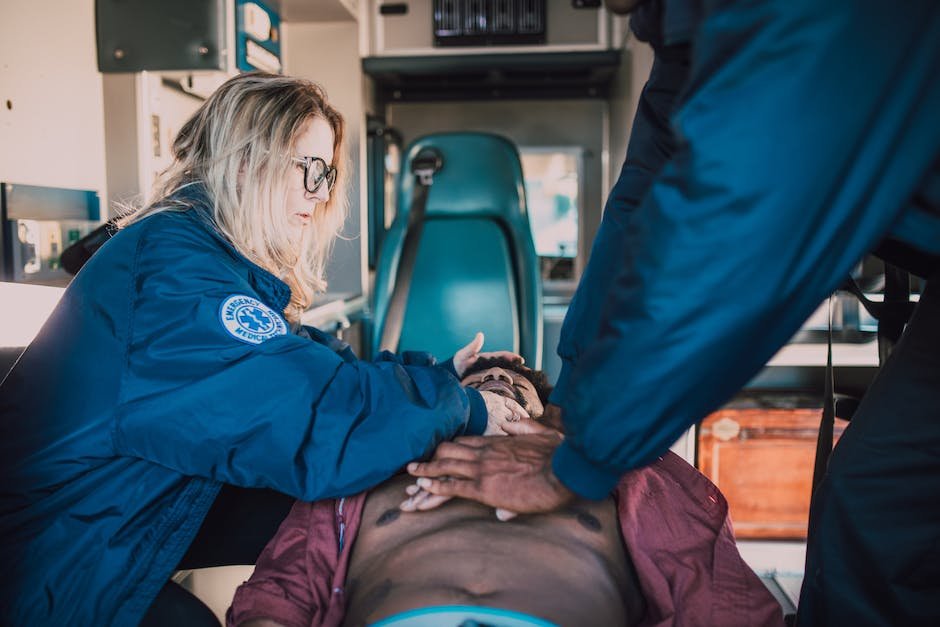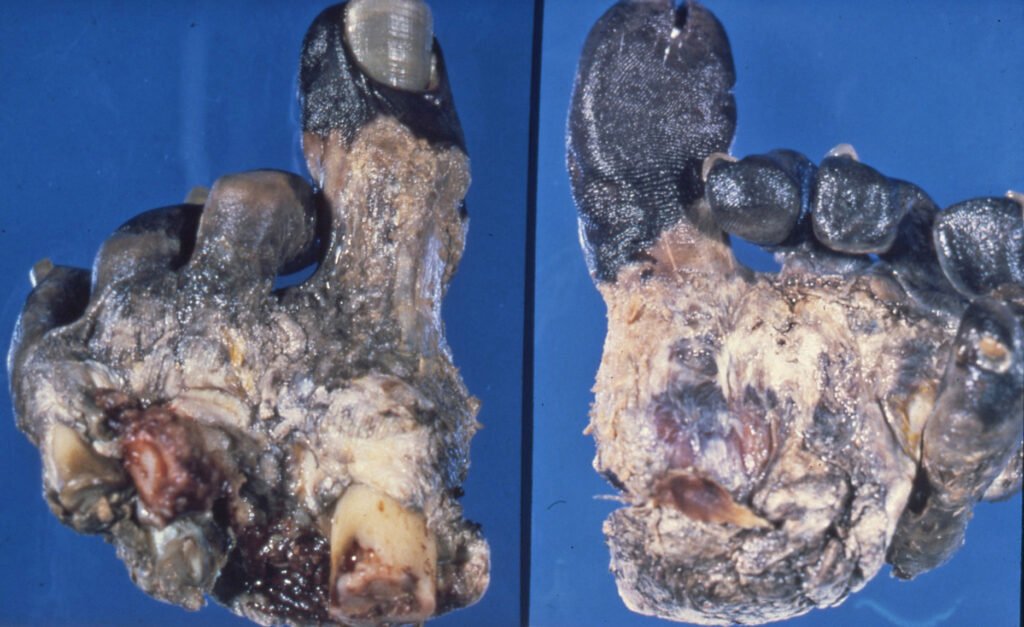Now Reading: How to Treat Burns When Medical Help is Unavailable
-
01
How to Treat Burns When Medical Help is Unavailable
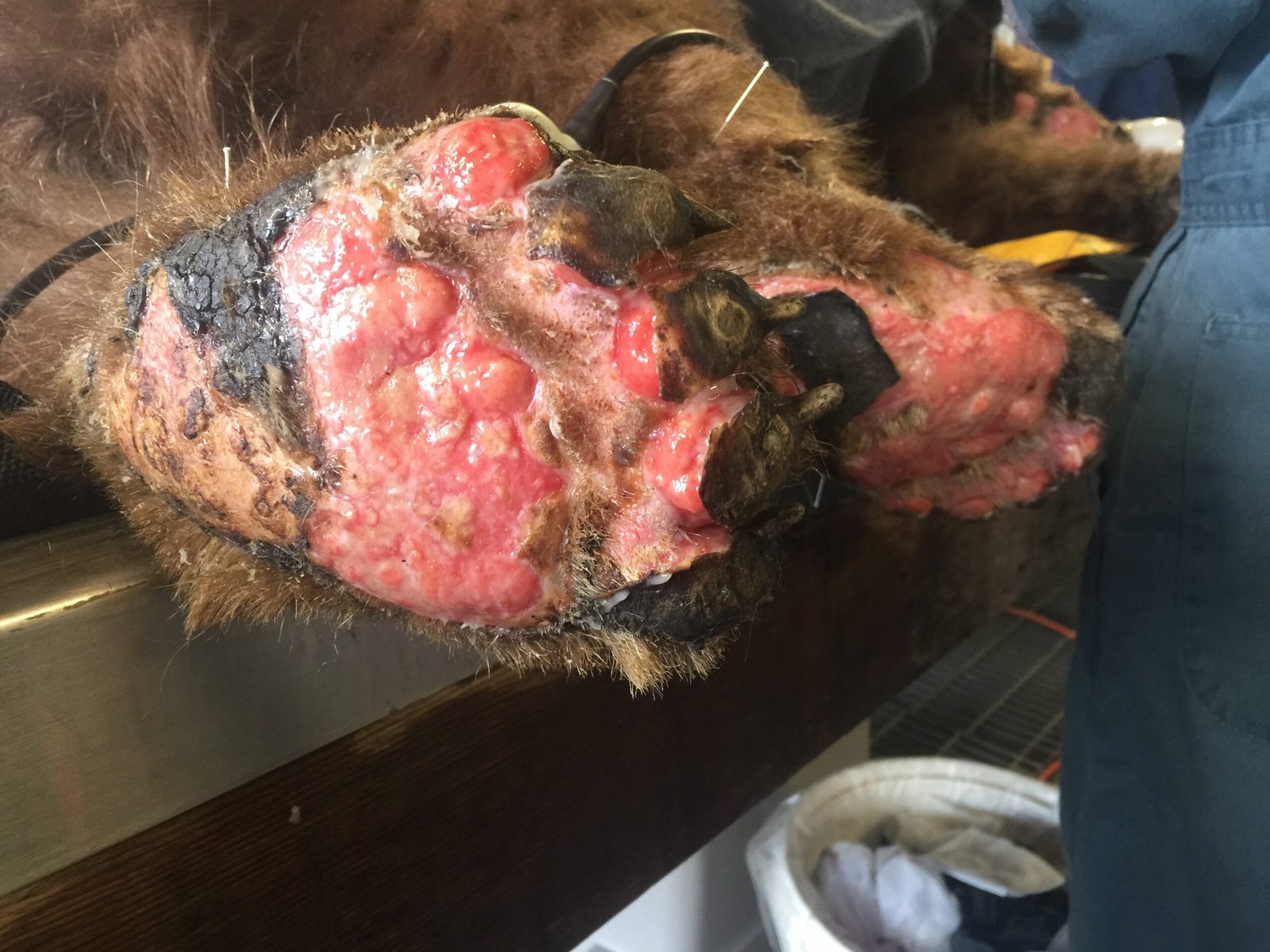
How to Treat Burns When Medical Help is Unavailable
Burns are like unwelcome visitors, arriving unexpectedly and leaving behind a trail of pain and discomfort. Whether caused by hot liquids, scalding flames, or even the sneaky sun, these injuries demand immediate attention. Yet, sometimes life’s misfortunes strike us at the most inconvenient times, and medical help becomes a distant luxury. In these desperate moments, knowing how to treat burns with the resources readily available can mean the difference between unbearable agony and the path to speedy recovery. So, if you ever find yourself without a medical professional at arm’s reach, fret not, for within this article lies a healing guide composed and designed to empower you with the skills to tackle burns head-on, armed with nothing more than courage and resourcefulness. Together, let us embark on a journey through the resilient human spirit and discover the art of treating burns in the absence of medical assistance.
Table of Contents
- Understanding the Severity of Burns: Identifying Degrees of Burn Injuries and Their Implications
- Home Remedies for Immediate Relief: Effective First Aid Measures for Burns
- Importance of Cool Running Water: The Power of Proper Cooling Technique for Burn Treatment
- Natural Alternatives for Pain Relief: Soothing Burned Skin with Simple Household Ingredients
- Protecting and Promoting Healing: Essential Care Steps for Treating Burns at Home
- Q&A
- In Conclusion
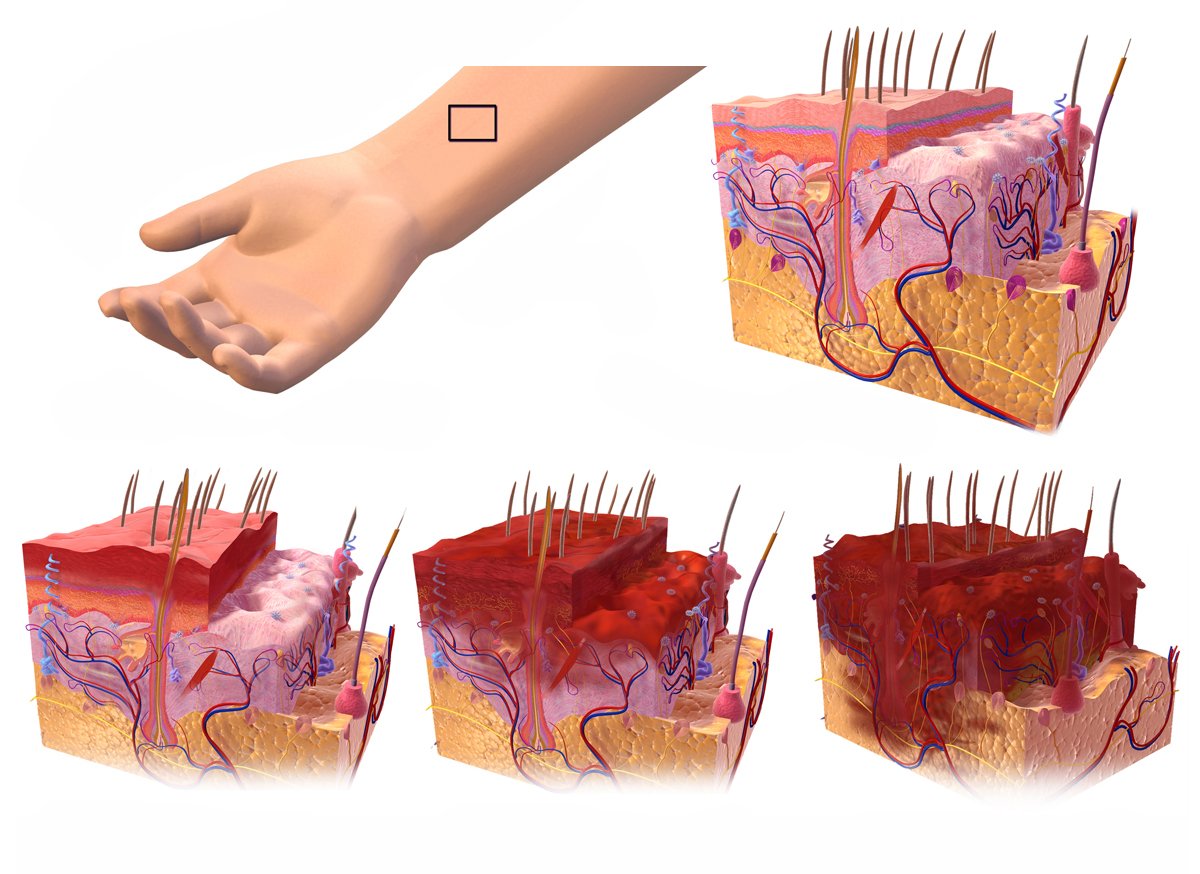
Understanding the Severity of Burns: Identifying Degrees of Burn Injuries and Their Implications
When it comes to burns, understanding their severity is crucial in order to provide appropriate care and ensure the best possible outcome for the affected individual. Burn injuries can range from mild to severe, causing varying degrees of damage to the skin and underlying tissues. By identifying the different degrees of burns, medical professionals can determine the necessary treatment and anticipate potential complications.
First-degree burns: These are superficial burns that only affect the outermost layer of the skin, known as the epidermis. Common examples include sunburn and minor scalds. Symptoms may include redness, pain, and mild swelling. First-degree burns usually heal within a week, and topical treatments such as aloe vera or over-the-counter pain relievers are often sufficient to alleviate discomfort.
Second-degree burns: Also known as partial-thickness burns, these injuries extend beyond the epidermis and affect the underlying dermis layer. Symptoms include intense pain, redness, blistering, and swelling. Healing time can vary depending on the severity, ranging from weeks to months. It is crucial to seek medical attention for second-degree burns to prevent infection and reduce the risk of scarring. Treatment may involve dressing the wounds, applying topical antibiotics, and administering pain medication as necessary.
Third-degree burns: Considered the most severe type of burn, third-degree burns affect all layers of the skin and can extend into underlying tissues, muscles, or even bones. The damage to nerve endings often results in the absence of pain, making these burns particularly dangerous as individuals may not realize the severity of their injuries. Third-degree burns typically appear black, brown, white, or charred. Immediate medical care is essential for managing third-degree burns, and treatment may involve surgical procedures, skin grafting, and extensive rehabilitation.
By understanding the different degrees of burn injuries and their implications, we can better comprehend the severity of burns and provide the appropriate care and support needed for recovery. Early detection and prompt medical intervention are vital in ensuring positive outcomes for individuals affected by burns.

Home Remedies for Immediate Relief: Effective First Aid Measures for Burns
Burns can be excruciatingly painful, and immediate relief is crucial to minimize the damage and promote healing. Thankfully, there are several home remedies that can provide effective first aid measures for burns.
1. Cool Water Therapy: The first step when faced with a burn is to run cool water over the affected area. This helps to lower the skin temperature and prevent further tissue damage. Make sure to keep the water cool, as using ice or extremely cold water can worsen the burn. Gently touch the burned area to check if the water temperature is gentle enough for the skin.
2. Aloe Vera Gel: Known for its soothing properties, applying aloe vera gel on a burn can provide instant relief. The gel helps to reduce inflammation, moisturize the skin, and promote healing. It’s best to use fresh aloe vera gel directly from the plant, but if that’s not available, opt for a store-bought gel that contains a high percentage of aloe vera. Apply the gel generously to the burn and repeat as needed for relief.
3. Honey: This golden elixir not only adds sweetness to your tea but also possesses incredible healing properties. The anti-inflammatory and antibacterial properties of honey can aid in reducing pain, swelling, and the risk of infection. Simply spread a thin layer of honey over the burn and cover it with a clean cloth or bandage. Leave it on for a few hours and then rinse gently with cool water. Reapply honey as needed throughout the day.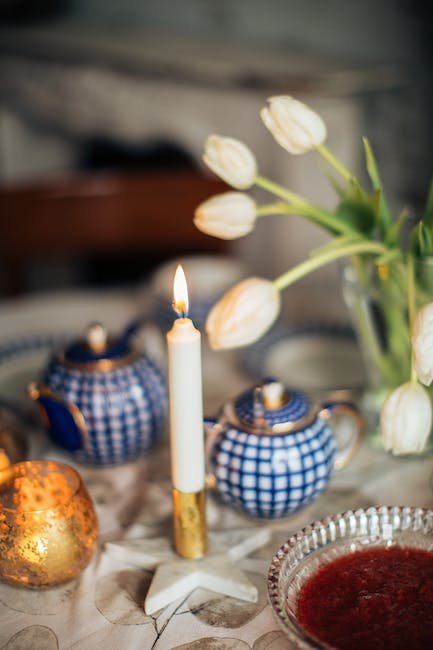
Importance of Cool Running Water: The Power of Proper Cooling Technique for Burn Treatment
When it comes to treating burns, one of the most powerful and effective techniques is the use of cool running water. The importance of this method cannot be emphasized enough, as it not only provides immediate relief but also plays a crucial role in preventing further damage to the skin.
Proper cooling of a burn can help in several ways:
- Immediate Pain Relief: Cool running water helps to soothe the pain caused by burns by numbing the nerve endings in the affected area.
- Temperature Control: By reducing the temperature of the burnt skin, proper cooling technique helps prevent the spread of heat deeper into the tissues, minimizing the extent of the burn.
- Reduced Swelling and Inflammation: The cooling effect of water helps to constrict blood vessels, limiting the swelling and inflammation that often accompany burns.
It is crucial to note that cold or icy water should be avoided, as it may further damage the skin. Instead, using cool running water at a moderate temperature for at least 10-20 minutes is recommended for immediate first aid treatment of burns.
Remember, the power of proper cooling with cool running water lies in its ability to provide immediate relief, control temperature, and minimize further damage. It is a simple yet effective technique that should not be overlooked when it comes to burn treatment.
Natural Alternatives for Pain Relief: Soothing Burned Skin with Simple Household Ingredients
When it comes to providing relief for burned skin, nature’s pantry holds an array of simple yet effective remedies. Instead of grabbing that over-the-counter ointment, why not turn to the power of natural ingredients to soothe your skin? Here are a few household heroes that you can rely on:
- Aloe Vera: Known for its cooling properties, the gel extracted from the aloe vera plant is a time-tested remedy for burned skin. Apply a generous amount directly to the affected area and let its natural healing power work its magic.
- Coconut Oil: This versatile ingredient not only moisturizes but also forms a protective layer on burned skin, helping to speed up the healing process. Gently apply a thin layer of coconut oil to the burnt area and allow it to absorb.
- Lavender Essential Oil: Renowned for its soothing properties, lavender essential oil promotes relaxation and reduces inflammation. Mix a few drops with a carrier oil, such as olive or jojoba oil, and gently massage onto the burned skin.
Remember, always conduct a patch test before trying any new remedies, and for severe burns, seek medical attention immediately. But for those minor burns that often occur while cooking or being exposed to the sun, these natural alternatives may provide the relief you need, right from the comfort of your own home.
Protecting and Promoting Healing: Essential Care Steps for Treating Burns at Home
When it comes to treating burns at home, proper care and attention are crucial for protecting the injured area and promoting healing. Here are some essential steps you can follow to ensure the best possible outcome:
- Immediate cooling: As soon as a burn occurs, it is essential to cool the affected area. Run cool (not cold) water over the burn for at least 10 minutes. This helps reduce pain, prevents the burn from spreading, and minimizes tissue damage.
- Gentle cleansing: After cooling the burn, gently clean the area with mild soap and warm water. Be sure to avoid scrubbing, as this may further irritate the burn. Pat the area dry with a clean towel or let it air dry.
- Apply a sterile dressing: Once the burn is clean, cover it with a sterile non-stick dressing or a clean cloth. This helps protect the burn from infection and provides a barrier against further damage. Avoid using adhesive bandages directly on the burn, as they can stick to the wound and cause pain when removed.
- Relieve pain and reduce swelling: Over-the-counter pain relievers like ibuprofen or acetaminophen can be taken to help alleviate pain and reduce swelling. However, it’s important to follow the recommended dosage and consult a healthcare professional if necessary.
Remember, while these steps can aid in the initial treatment of burns at home, seeking medical attention for more severe burns is essential. It’s always wise to consult a healthcare professional for proper evaluation and guidance throughout the healing process.
Q&A
How can I treat burns when medical help is unavailable?
To treat burns when medical help is not immediately available, start by cooling the burn with cold, running water for at least 20 minutes. Cover the burn with a clean, non-stick bandage or cloth, and avoid using adhesive dressings directly on the burn.
What should I do if running water is not accessible?
If running water is unavailable, immerse the burn in cold water or use a cold, damp cloth to cool the affected area. Avoid using ice or very cold water as it may further damage the skin.
What should I do if the burn is severe or covers a large area?
In cases of severe or extensive burns, it is crucial to seek medical help as soon as possible. While awaiting professional assistance, keep the person lying down and elevate the burned area. Avoid using adhesive dressings directly on the burn and do not attempt to remove any clothing stuck to the burn.
Should I pop any blisters that form?
No, it is important to resist the urge to pop any blisters that form after a burn. Popping blisters can increase the risk of infection and slow down the healing process. Instead, leave the blisters intact and seek medical advice when accessible.
What over-the-counter creams can I use for minor burns?
For minor burns, you can use over-the-counter creams that contain aloe vera or hydrocortisone. These creams can help soothe the burn and reduce inflammation. However, it is still advisable to seek medical attention as soon as possible.
What home remedies can be helpful for burns?
While waiting for medical help, you can apply aloe vera gel, which has cooling and soothing properties. Additionally, applying honey to a burn can help speed up the healing process, thanks to its antibacterial properties. However, these remedies should not replace professional medical care.
In Conclusion
In the face of unexpected accidents and incidents, knowing how to treat burns when medical help is unavailable becomes an essential lifesaving skill. While professional medical assistance should always be sought whenever possible, there may be instances where immediate access to medical professionals is simply not feasible. In such moments, we must rely on our resourcefulness, calmness, and the power of improvisation to provide the best possible care. By understanding the principles of first aid, utilizing readily available resources, and fostering a strong spirit of resilience, we can effectively mitigate the pain, prevent infection, and promote healing in the absence of medical professionals. Remember, while these guidelines provide valuable knowledge in times of need, nothing can replace the expertise and care of a skilled medical professional. So, stay prepared, stay level-headed, and may your newfound knowledge bring courage and hope to those unforeseen moments when medical help is seemingly out of reach.
As an affiliate, my content may feature links to products I personally use and recommend. By taking action, like subscribing or making a purchase, you’ll be supporting my work and fueling my taco cravings at the same time. Win-win, right?
Want to read more? Check out our Affiliate Disclosure page.

